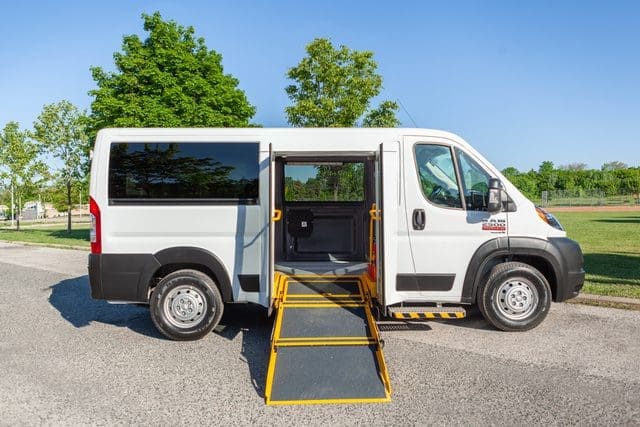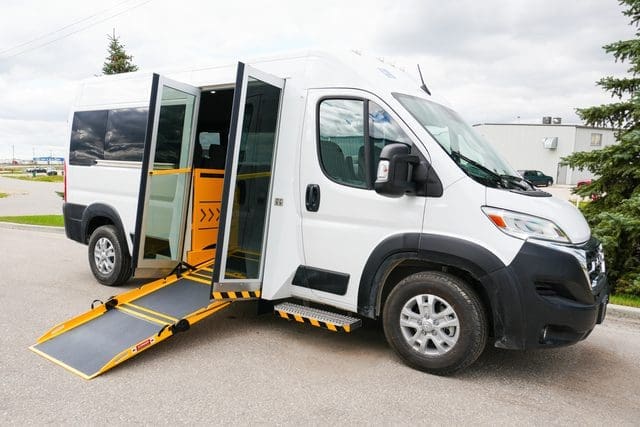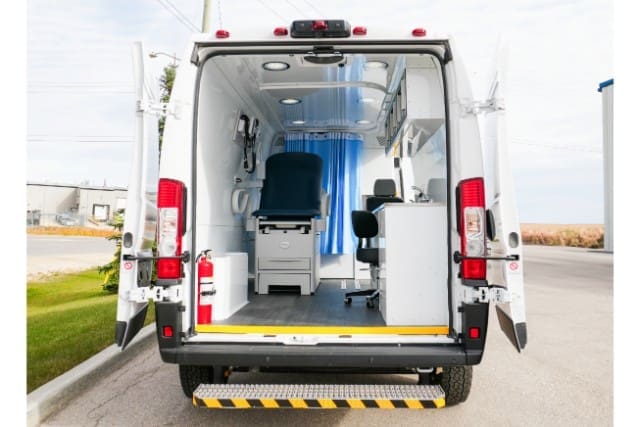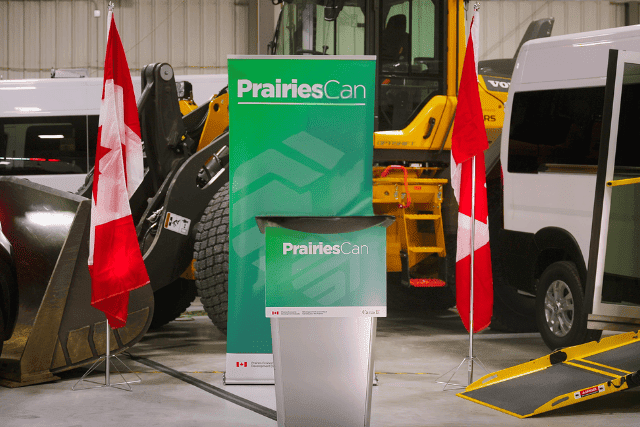You might run a non-profit, a long-term care home, or a community program. You need a wheelchair van, and your budget is tight. So, you head to the internet and start looking for a low-cost wheelchair van in Canada. You find a used one that is five times cheaper than anything you’ve seen, and something isn’t sitting right. You’re left wondering, what’s the catch?
It’s a tough spot. You need to transport people safely and reliably, but budget constraints push you toward cheaper options. The problem?
Low-cost vans often hide big problems:
- Breakdowns
- Safety concerns
- Poor accessibility
In the end, what looks affordable can lead to higher costs, frustrated staff, and unreliable transportation for the people who depend on you.
At MoveMobility, we’ve spent over 20 years building vans that remove barriers to healthcare and transportation. We’ve worked with hundreds of organizations like yours and Loft all across Canada. And we’ve seen firsthand the problems that can come from choosing the wrong van, especially ones built to cut corners. While we build vehicles ourselves, this article isn’t about selling you one. It’s about helping you avoid common mistakes.
In this article, you’ll learn the top five problems that can come with choosing a low-cost wheelchair accessible van, and how to avoid them before they become your problem.
1. Low-cost wheelchair vans often cut corners on safety
You’ve heard it before: if it looks too good to be true, it probably is. That goes for late-night infomercials, mystery meat, and, yes, even low-cost wheelchair vans.
When the price tag is suspiciously low, chances are something’s been left out. And sadly, what gets left out is often safety.
Maybe the ramp works… most of the time. Or maybe the tie-downs kind of do the job if you wiggle them just right. The thing i,s when your passengers rely on that equipment to keep them secure during every ride, “good enough” isn’t good at all.
Common safety cutbacks in low-cost wheelchair vans:
- Cheap or outdated ramps that can jam, stick, or break
- Low-quality tie-downs that don’t meet Canadian safety standards
- Worn-down floors that turn into slip hazards in winter
- Rusting undercarriages that won’t survive a Prairie pothole season
And remember, we’re talking about Canadian roads here. That means snow, ice, slush, and road salt. If a van isn’t built for those conditions, things can go sideways fast.
Transport Canada has strict safety rules for accessible vehicles. But not every bargain-bin van follows them.
Bottom line: Safety isn’t a luxury, it’s the foundation. Skipping it to save money now could lead to bigger problems later.
2. Low-cost wheelchair vans can come with expensive surprises
You just purchased a wheelchair van for an unbeatable price. At first, everything looked great. The van fits the budget, looks decent, and even has low mileage. But after a few weeks of use, things start to unravel.
That’s when the hidden costs start creeping in.
A strange noise from the lift. The ramp sticks. Tie-downs feel loose. Before you know it, you’re on the hook for repairs you didn’t plan for, and your “great deal” is turning into a money pit.
Here’s what you might end up paying for:
- Out-of-pocket repairs: Electrical issues, rusty lift parts, or brake work
- Missing features: No heating in the rear cabin, no grab handles, no winter protection
- Upgrade costs: Adding the equipment that should’ve been there to begin with
- Replacement parts: Especially hard to find for older or imported vans
Imagine transporting clients in northern Alberta in the middle of winter, and the heat stops working in the back. You’d have to spend extra money to get that repaired just to continue operating.
When you’re transporting vulnerable passengers, the people who rely on you, you can’t afford the downtime or the extra costs.
What seems cheap today can cost you big tomorrow.
3. Low-cost wheelchair vans aren’t always built for Canadian weather
A van might run fine on a sunny test drive in July. But the real test? That’s when February hits, and you’re trying to load a passenger during a blizzard in Saskatoon.
Some low-cost wheelchair vehicles just aren’t made with Canadian weather in mind. They might come from warmer climates or be stripped-down imports with zero winterization. And when snow, ice, and salt get involved, things start falling apart, literally.
What can go wrong in Canadian conditions?
- Rust: Cheap undercoatings don’t stand up to road salt
- Freezing doors or ramps: Water seeps in, freezes overnight, and suddenly nothing works
- Poor insulation: Cold cabins and fogged-up windows are uncomfortable and unsafe
- Weak batteries or heaters: Especially in older or retrofitted models
Some of the vans we’ve seen come into Canada just aren’t prepared for the reality of our roads. And that’s a problem if you’re based in provinces like Manitoba, Saskatchewan, or Alberta, where temps can dip below -30°C regularly.
And let’s be honest, when the ramps freeze or heaters stop working, it’s a huge inconvenience. It can delay appointments, leave passengers waiting, or even risk someone’s health.
In short: A van that can’t handle a Canadian winter isn’t much of a van at all. Check out the Trail Edition upgrade and see how it can tackle winter’s challenges.
4. Low-cost wheelchair accessible vans might not fit your riders’ actual needs
Every passenger is different. So is every organization. That’s why a one-size-fits-all setup rarely works, especially when you’re working with a low-cost wheelchair accessible van that’s been stripped down to the basics.
Sure, the van might technically be “accessible.” But does it actually work for your riders, staff, and daily operations?
Here are some issues this can cause:
- Ramp slope is too steep: Hard for attendants to load passengers safely
- Ceiling too low: Taller clients or power chairs don’t fit
- Poor floor plans: No extra space for support staff or personal belongings
- Limited flexibility: Can’t transport more than one wheelchair at a time
Imagine purchasing a cheap wheelchair van and then finding out that most of your clients’ wheelchairs won’t even fit inside the vehicle. Your van could sit unused for months while you scramble to find something that actually works.
Buying a van without thinking about your riders’ size, mobility levels, and how often you’ll be loading and unloading is like buying shoes without checking the size. Sure, they look nice, but no one can use them comfortably.
5. Low-cost wheelchair vehicles don’t last as long, and that short lifespan adds up
A low price might feel like a win right now. But fast-forward a year or two, and that same low-cost wheelchair vehicle could be spending more time in the shop than on the road.
That’s because budget vans are often built with cheaper materials, outdated conversion equipment, or they’ve already lived a full life before they got to you. So while the price tag looks nice today, the lifespan of the vehicle is often cut short.
What shortens the life of a low-cost van?
- High mileage before you even buy it
- Outdated lifts or conversions that wear out fast
- Low-quality materials that can’t handle daily wear and tear
- Limited support from the original manufacturer, if they’re even still around
With a budget-friendly wheelchair van, you often don’t get any warranty, parts, or service support after your purchase. Compare that with a purpose-built van that will last a decade or more with proper maintenance. You get consistent service, fewer surprises, and a better return on your investment.
Bottom line: A short lifespan means you’ll be back shopping and spending all over again sooner than you think.
What will a reliable wheelchair van cost you (and why is it worth it?)

By now, you’re probably wondering, OK, so what does a good, reliable wheelchair van actually cost?
Let’s break it down:
Here’s what you can expect to invest:
- Rear-entry wheelchair minivan: $92,000–$110,000 CAD
- Full-size wheelchair van: $110,000–$180,000 CAD
Sure, those numbers are higher than what you’ll see in a Facebook Marketplace listing or from a budget-friendly reseller. But you’re also getting way more than four wheels and a ramp.
You’re getting a vehicle that’s been built for daily, demanding use and built right here in Canada for Canadian conditions.
What’s included in a quality build?
- Reliable HVAC system: So no one’s freezing in the back
- Flexible floor track system: AutoFloor allows quick and easy seating changes
- Lift or ramp: Durable, safe, and smooth
- Finishing and insulation: Keeps things quiet and comfortable
- Interior paneling and lighting: Designed for safety and visibility
- Wheelchair restraints: So everyone rides securely
- Grab poles and assist handles: For easy entry and exit
- Onboard safety equipment: Fire extinguishers, first aid kits, etc.
- After-sales support: Help when you need it most
And the cherry on top? You get a vehicle that carries the National Safety Mark, a Transport Canada designation that means the vehicle meets all federal safety regulations. Learn more here.
So yes, you’ll spend more upfront. But you’ll avoid the repair bills, downtime, and stress that often come with buying the cheapest option on the lot.
A reliable van is an investment, not just a purchase.
Got any questions about low-cost wheelchair vans?
You came here because you’re facing a tough decision. You’re likely looking for a budget-friendly wheelchair van without putting safety, reliability, or your riders at risk. You’re trying to do the right thing for your organization, your passengers, and your bottom line.
Now you know what to watch out for:
- Safety risks that come from cutting corners
- Hidden repair and upgrade costs
- Vans that can’t handle Canadian weather
- Layouts that don’t match your real-world needs
- Short lifespans that drain your budget down the road
At MoveMobility, we’ve spent over two decades helping organizations across Canada find the right-fit solution. We work closely with healthcare teams, community programs, and Indigenous organizations to design vehicles that actually work for your climate, your passengers, and your everyday challenges. We’re here to listen first and help you make decisions that last. Because when it comes to saving lives and removing barriers, there’s no room for guesswork.
Have questions? Click the button below to talk to a real human, a mobility expert who gets it and wants to help.
If you’re not ready to chat just yet, we’ve got some great resources to help you dig a little deeper.
Start by checking out the video below on the 11 steps to choosing a wheelchair van. This will help give you some more direction for your purchase.
After that, read through our article on the cost of a wheelchair van for one year.






